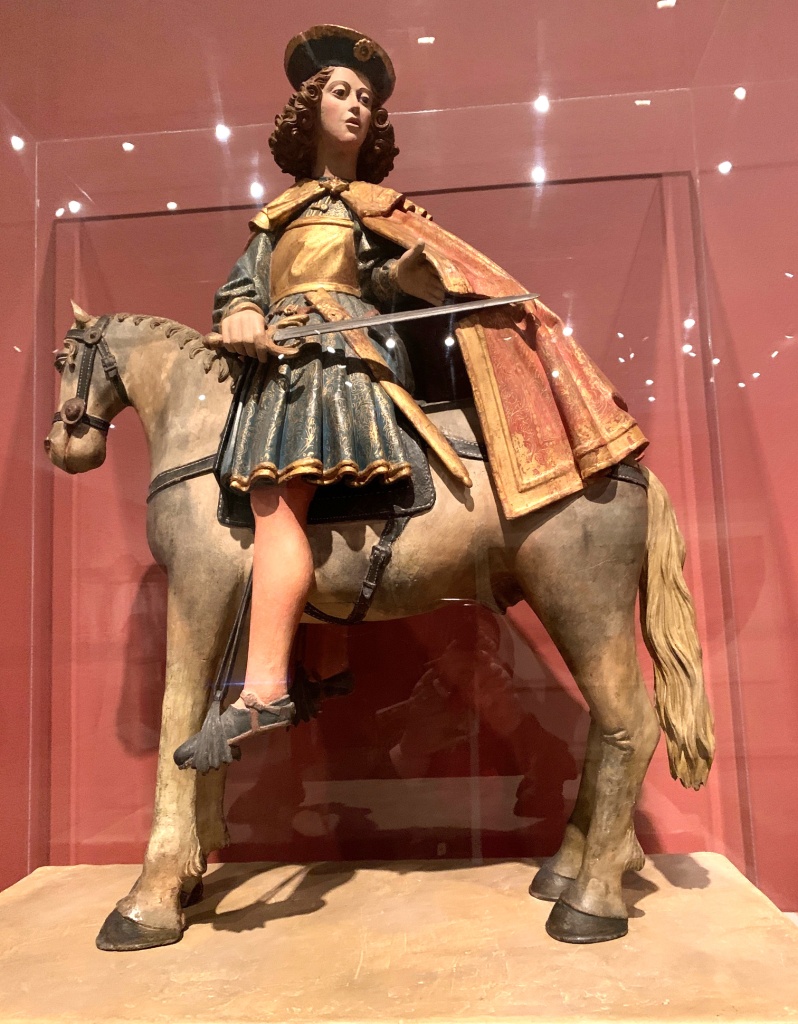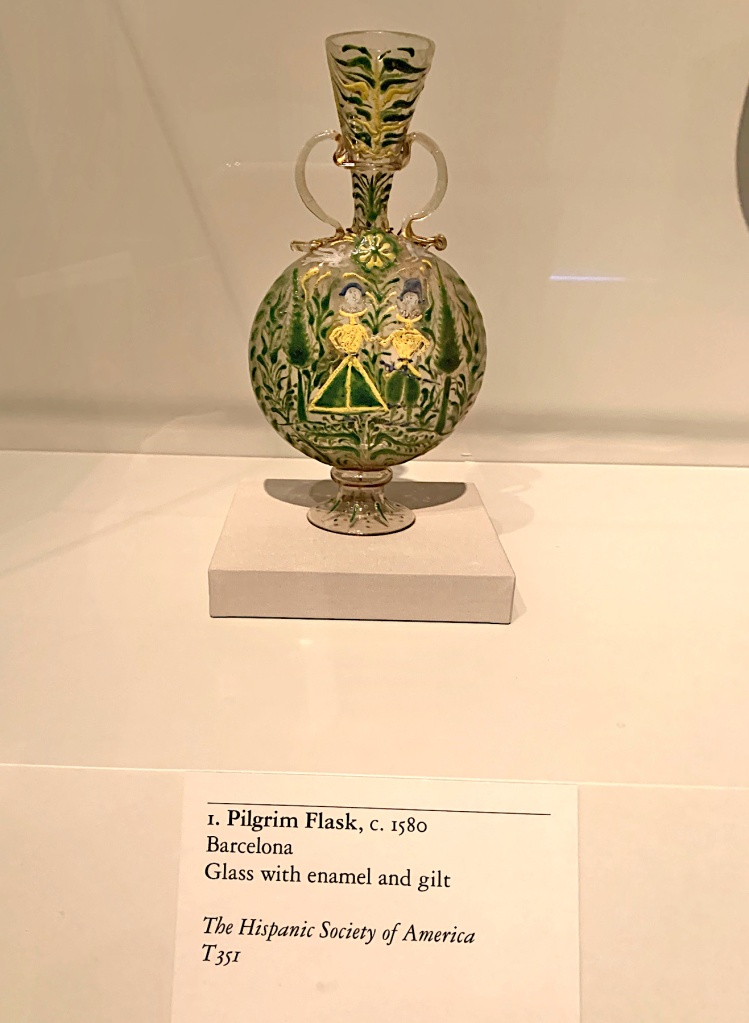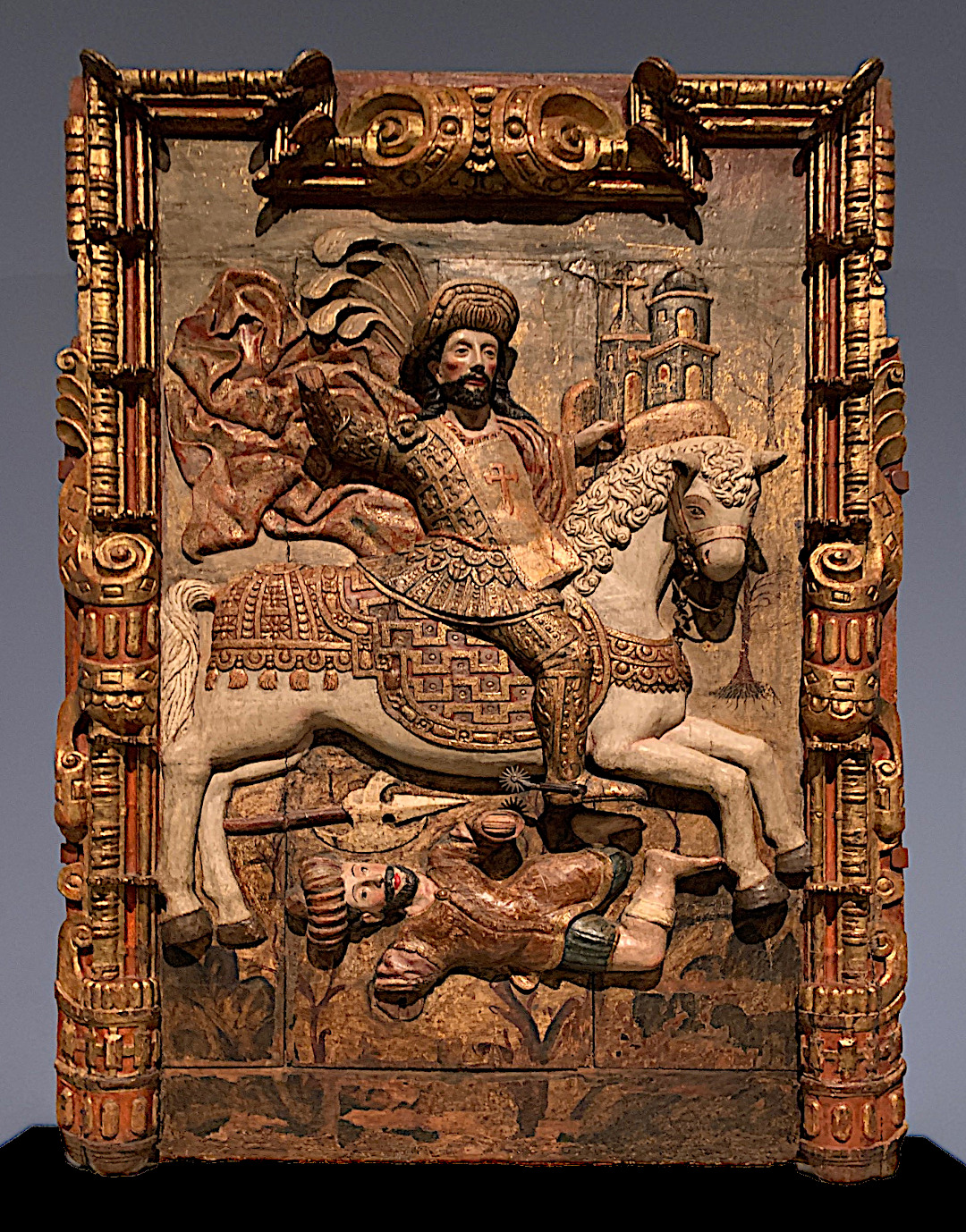Have you had the experience of learning a new word that you never came across before, and then in the next few days you see or hear that word several times? I have, and in regards to the Camino I am now having that sort of experience regularly with images connected to the Camino. Obviously, the images have always been present around me, but I never recognized them for what they were before journeying on the Camino.
I experienced this sensation powerfully earlier this month when I rushed to see an exhibit at Houston’s Museum of Fine Arts before the exhibit closed on January 3rd. The exhibit opened in March, but I was traveling that month, then I came down with COVID-19, then I spent two months recuperating, and then I obeyed lockdown rules and stayed at home. When the museum announced that it was opening to limited attendance and with full safety precautions, I thought about registering for a timed ticket but put it off. So, in December I realized the exhibit was about to close and scrambled to get one of those limited timed tickets.

Thank goodness I went to see “Treasures of the Hispanic Society Museum & Library” before it closed. When I entered the exhibit, the first thing I saw was a giant photograph of Santiago Cathedral. In this pandemic year, when my planned return trip to the Camino had to be scrapped, what a delight it was to come upon this opening scene welcoming all visitors to sample the treasures of Spain. The museum’s label for the photo credited the cathedral to Bernard the Elder, a Spaniard active in the 11th century, and gave the dates for the building of the cathedral as 1075-1211.

Next, I came upon a lovely statue of St. Martin of Tours. While on the Camino, I had read that St. Martin was one of the favorite saints of the French medieval pilgrims who were streaming along the Camino Francés. Churches bearing his name as well as statues of him can be found all along the Camino.

Glass “Pilgrim Flask” with enamel and gilt
Walking along the Camino, I carried a gourd attached to my backpack, and I noted the gourds in the many, many statues and paintings of St. James and of pilgrims that one sees along the Way. What I never saw in Spain, but was delighted to see in the exhibit, was an exquisite 18th century “pilgrim flask.” I doubt this delicate glass and enamel flask was ever carried on a pilgrimage, but it does remind us that many pilgrims came from wealthy families. Whether rich and poor, all traveled along the Camino to Santiago, each according to his or her station.

Of course, I had expected to see masterpieces by Velázquez, El Greco, Goya, and other world-renowned artists. I had not expected, however, to see a fabulous relief by an unknown Mexican artist. It seems it is not only we who travel to Spain to visit St. James, but also St. James who comes to visit us in faraway lands, wearing his wide-brimmed hat. Here, St. James appears as Santiago Matamoros (Moor-Killer). as he does in Santiago Cathedral. It was interesting to learn in the book accompanying the exhibit that St. James was also depicted as Santiago Mataindios (Indian-Killer) elsewhere in Mexican art.
As I wrote in my book Savoring the Camino de Santiago, after finishing the Camino I journeyed on to Madrid and Toledo to visit the Prado and other museums. While not specifically related to the Camino, I was thrilled to see as part of the Hispanic Society’s exhibit Goya’s magnificent portrait of the Duchess of Alba as well as two portraits by Velázquez.
This exhibit has been on a worldwide tour. It started in Madrid at the Prado in 2017, moved on to Mexico City in 2018, stayed in Albuquerque, New Mexico, for four months from 2018-2019, and then journeyed to Cincinnati before opening here in Houston in March 2020. It is a pity that its time in Houston has corresponded with the pandemic, for that surely has suppressed the number of Texans who have had the opportunity to see this magnificent exhibit.
For me, having the exhibit in Houston was fortuitous—the next-best-thing to being able to return to Spain and the Camino in 2020. Now, if ever I return to New York City, I will know that the Hispanic Society of America is a destination not to be missed for those who love Spain.

